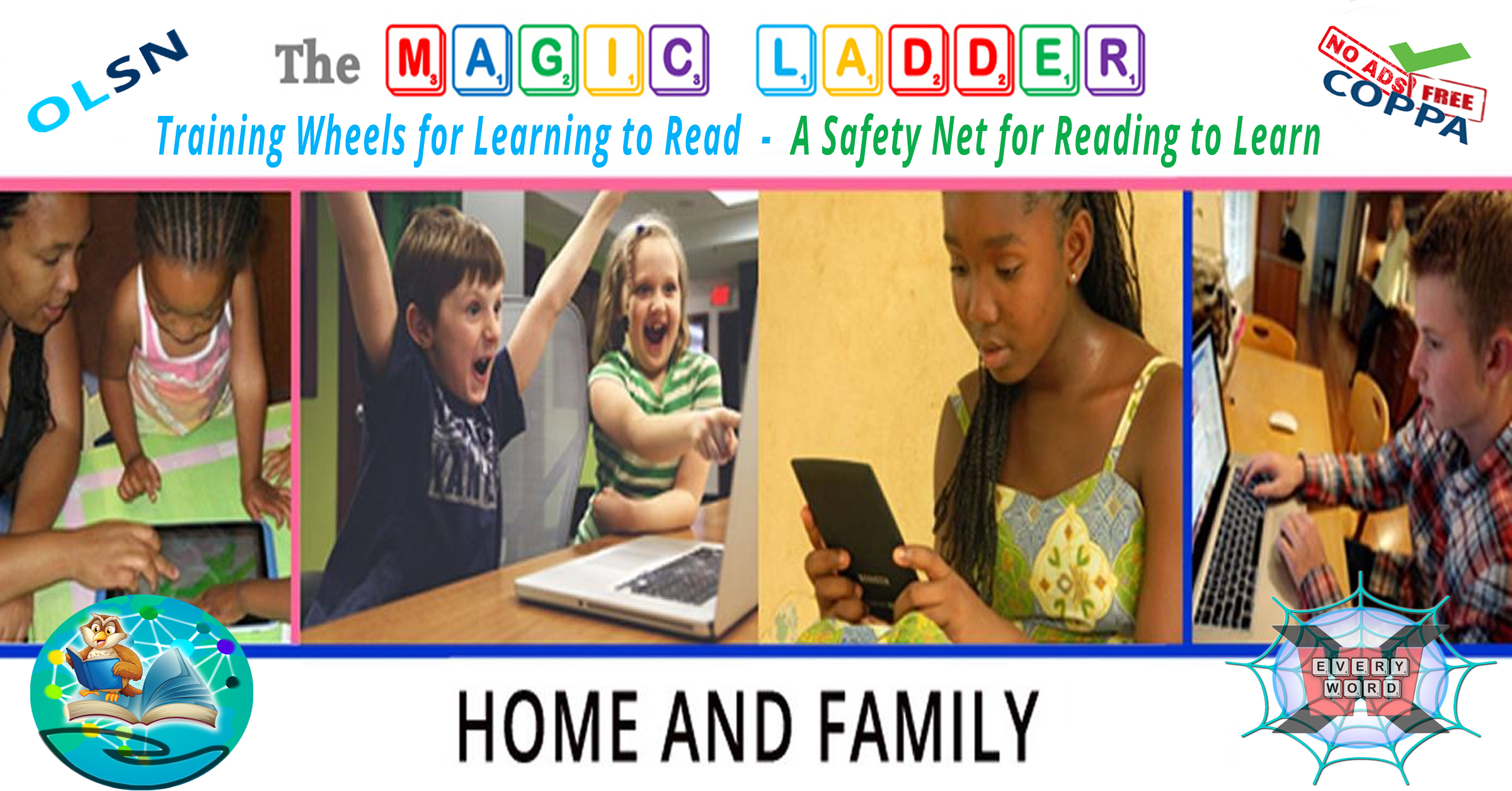
|
New, Click Bulb:
|
|
Pre-K | 1-2 | 3-4  |

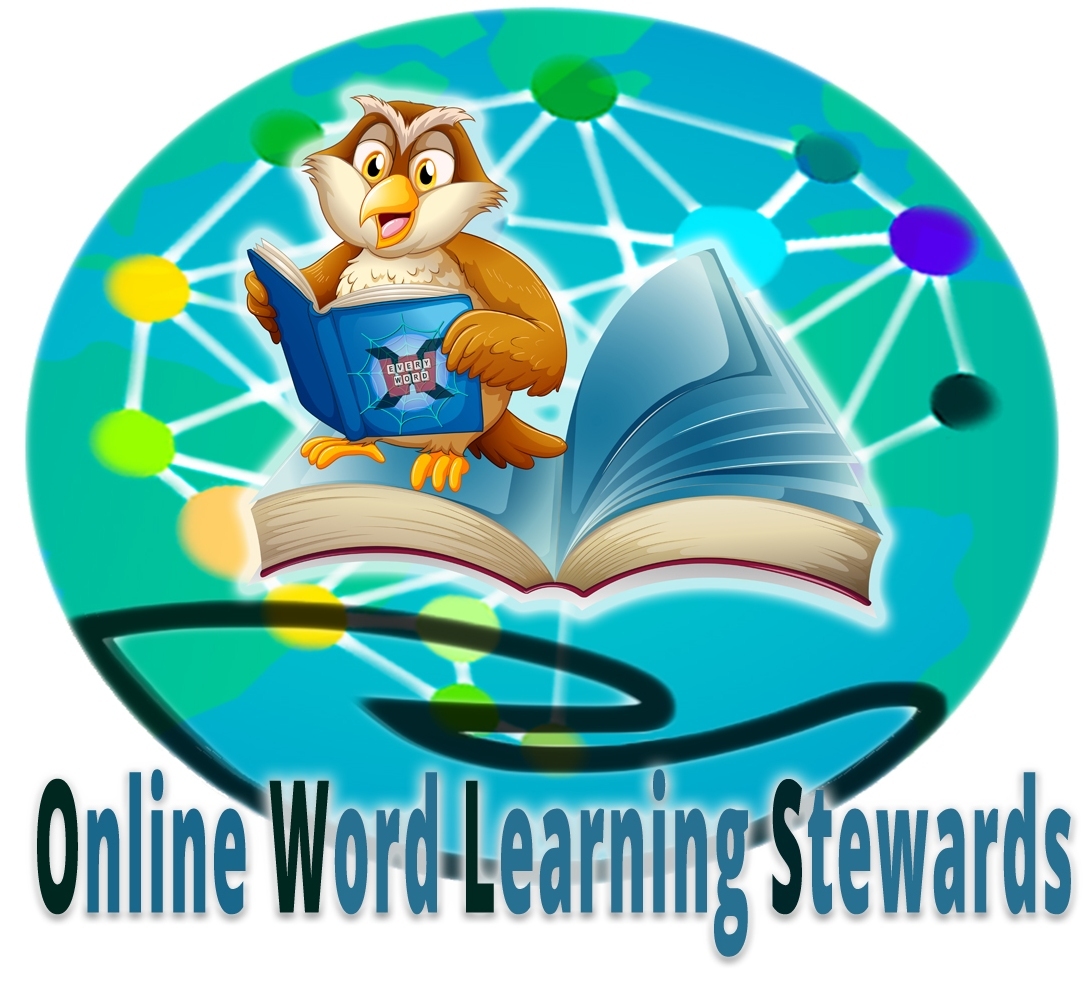
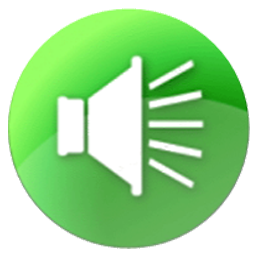 Getting Started: Welcome to a new and easier way to help your child improve their reading. Within a few minutes you will be able to show your child how to use OLSN, the Online Learning Support Net
Getting Started: Welcome to a new and easier way to help your child improve their reading. Within a few minutes you will be able to show your child how to use OLSN, the Online Learning Support Net  . With OLSN, every word your child has difficulty reading becomes its own word learning helper. With just a few minutes of your help your child will be using OLSN.
. With OLSN, every word your child has difficulty reading becomes its own word learning helper. With just a few minutes of your help your child will be using OLSN.

|
|

 Parents: Learning to Use the Magic Ladder Library
Parents: Learning to Use the Magic Ladder Library
 Once your child starts using OLSN, every one of the millions of words in the Magic Ladder Library will be ready to help them improve their reading. But, OLSN is just the ground floor. The Magic Ladder Library has many other features and functions that can help your child. Take a few moments now to learn about how to use the Magic Ladder Library.
Once your child starts using OLSN, every one of the millions of words in the Magic Ladder Library will be ready to help them improve their reading. But, OLSN is just the ground floor. The Magic Ladder Library has many other features and functions that can help your child. Take a few moments now to learn about how to use the Magic Ladder Library.
 Notice the two buttons at the top of this page. The Back Arrow button
Notice the two buttons at the top of this page. The Back Arrow button  simply links back to the previous page. The Help and Settings button
simply links back to the previous page. The Help and Settings button 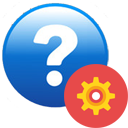 opens the Magic Ladder’s control panel.
opens the Magic Ladder’s control panel.
 Click the Help and Settings button. Notice that you can use the Help and Settings control panel to change OLSN‘s voice
Click the Help and Settings button. Notice that you can use the Help and Settings control panel to change OLSN‘s voice  , to access the Main Library Index
, to access the Main Library Index ![]() , and to access the Help Center
, and to access the Help Center 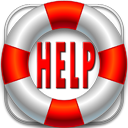 . For now, just remember that you, and soon your child, should click this button to navigate the library or to get help.
. For now, just remember that you, and soon your child, should click this button to navigate the library or to get help.

![]() Now that you are familiar with this website’s two control buttons and you know how to use OLSN to get help with any word, take a few minutes to look through the Magic Ladder Library and E-Book collection. Make a list of the stories and eBooks you think your child might like to read.
Now that you are familiar with this website’s two control buttons and you know how to use OLSN to get help with any word, take a few minutes to look through the Magic Ladder Library and E-Book collection. Make a list of the stories and eBooks you think your child might like to read.
 TEACHING YOUR KIDS TO USE OLSN:
TEACHING YOUR KIDS TO USE OLSN:
 Open a Magic Ladder Library story or eBook (if you are using the OLSN Chrome extension, you can open any page on the web). Start reading out loud and use your finger or pointer to show each word you are reading so your child can follow along with you.
Open a Magic Ladder Library story or eBook (if you are using the OLSN Chrome extension, you can open any page on the web). Start reading out loud and use your finger or pointer to show each word you are reading so your child can follow along with you.
 Pretend that you don’t know some of the words, and click or touch them to demonstrate how to use OLSN to get help. As you are reading and come across particularly interesting words or ones with strange spelling patterns, click them and use OLSN to explore their letter-sounds, definitions, or roots.
Pretend that you don’t know some of the words, and click or touch them to demonstrate how to use OLSN to get help. As you are reading and come across particularly interesting words or ones with strange spelling patterns, click them and use OLSN to explore their letter-sounds, definitions, or roots. After you think you have sufficiently demonstrated OLSN, have your child take turns reading. While they are reading, track along, and every time they start to stumble (but before they stumble and get embarrassed), click on the word for them.
After you think you have sufficiently demonstrated OLSN, have your child take turns reading. While they are reading, track along, and every time they start to stumble (but before they stumble and get embarrassed), click on the word for them. Now let them take over reading and using OLSN. Every time you hear their voice slow down or stumble reading a word make sure they click the word and call OLSN.
Now let them take over reading and using OLSN. Every time you hear their voice slow down or stumble reading a word make sure they click the word and call OLSN. Once they are reliably calling OLSN whenever they hit a word that doesn’t pop to mind, let them read by themselves as much as they want to, knowing that OLSN will be there to help them with every word, in every story, and in every article in the library (and with the OLSN Chrome extension, virtually every word on the web).
Once they are reliably calling OLSN whenever they hit a word that doesn’t pop to mind, let them read by themselves as much as they want to, knowing that OLSN will be there to help them with every word, in every story, and in every article in the library (and with the OLSN Chrome extension, virtually every word on the web). Your child has now learned enough to get started. The most important thing you need to now is to encourage them to use OLSN every time a word doesn’t pop to mind. The next most important is to be very careful not to do anything that causes them to feel ashamed of themselves for not being good enough at learning.
Your child has now learned enough to get started. The most important thing you need to now is to encourage them to use OLSN every time a word doesn’t pop to mind. The next most important is to be very careful not to do anything that causes them to feel ashamed of themselves for not being good enough at learning.
The simple rules your child should follow:
 #1. Always click on words they don’t immediately recognize and understand (and then use OLSN to help).
#1. Always click on words they don’t immediately recognize and understand (and then use OLSN to help).  #2. After each click, always try to read the word before clicking it again. The more they try to read the word in-between each click, the better they will get at recognizing the word before the pop-up reads it. The more they do this, the sooner they will learn to figure out words without having to click on them.
#2. After each click, always try to read the word before clicking it again. The more they try to read the word in-between each click, the better they will get at recognizing the word before the pop-up reads it. The more they do this, the sooner they will learn to figure out words without having to click on them. #3. When they recognize a word, but don’t understand what it means, they should always click on the Word Explore
#3. When they recognize a word, but don’t understand what it means, they should always click on the Word Explore  Now that you now understand the basic’s of how to use OLSN and the Magic Ladder Library, feel free to get your child started and learning further as they go. If you’d prefer to learn about some of the Magic Ladder’s other important components, continue reading more of this page and learn about some of the other ways the Magic Ladder Library can help your child improve his or her reading.
Now that you now understand the basic’s of how to use OLSN and the Magic Ladder Library, feel free to get your child started and learning further as they go. If you’d prefer to learn about some of the Magic Ladder’s other important components, continue reading more of this page and learn about some of the other ways the Magic Ladder Library can help your child improve his or her reading.
Other Important Features of the Magic Ladder:

 Personalizing Stories with Your Child’s Name:
Personalizing Stories with Your Child’s Name:  The first names of the main characters in many of the stories in the Magic Ladder Library can be replaced with your child’s name. To make the stories use your child’s name, click the Help and Settings button
The first names of the main characters in many of the stories in the Magic Ladder Library can be replaced with your child’s name. To make the stories use your child’s name, click the Help and Settings button  and enter your child’s name in the “replace word” field. Click for more about: personalizing stories with your child’s name.
and enter your child’s name in the “replace word” field. Click for more about: personalizing stories with your child’s name.
 The following Magic Ladder Library features will quickly become self-evident to your child in just a couple of times of trying them. However, it’s helpful for you to understand how they work and to encourage their proper use.
The following Magic Ladder Library features will quickly become self-evident to your child in just a couple of times of trying them. However, it’s helpful for you to understand how they work and to encourage their proper use.
 Read it to Me: Whenever this speaker button
Read it to Me: Whenever this speaker button  is visible at the beginning of a line or paragraph, your child has the option of having OLSN read the passage out loud to them. As OLSN reads the passage it will also highlight each word as it is spoken. They shouldn’t click it often unless they really need to. Click for more about: Read it to Me
is visible at the beginning of a line or paragraph, your child has the option of having OLSN read the passage out loud to them. As OLSN reads the passage it will also highlight each word as it is spoken. They shouldn’t click it often unless they really need to. Click for more about: Read it to Me
Read it to Me for Flow: Speaker buttons can also appear at the end of lines, or paragraphs. Your child can click them when they want to make sure that they have understood the paragraph, but only AFTER they have read it themselves, and used OLSN on any words they needed help with. Just listening to the paragraphs, and NOT using OLSN, won’t help them read better. Click for more about: Read it to me for Flow 
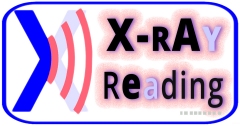
 In many stories instead of a speaker button at the start or end of passages you will see the X-Ray Reading button
In many stories instead of a speaker button at the start or end of passages you will see the X-Ray Reading button 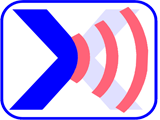 . X-Ray Reading is like a 21st century “bouncing ball” that highlights the inner structure of each word it bounces on. It makes possible a new way of learning to associate the visual patterns seen in written words with the sound patterns heard when they are spoken. Click here for more. Click the X-Ray Reading button to experience it on this paragraph.
. X-Ray Reading is like a 21st century “bouncing ball” that highlights the inner structure of each word it bounces on. It makes possible a new way of learning to associate the visual patterns seen in written words with the sound patterns heard when they are spoken. Click here for more. Click the X-Ray Reading button to experience it on this paragraph. 
 Stop and Learn Words: Sometimes clicking the 1st Speaker button will begin a stream of reading that will suddenly stop on words that are colored red. When the reading stops on a word, the word will blink. That means that the reader should click on it, and use OLSN to help them read it. Click for more about: Stop and Learn Words
Stop and Learn Words: Sometimes clicking the 1st Speaker button will begin a stream of reading that will suddenly stop on words that are colored red. When the reading stops on a word, the word will blink. That means that the reader should click on it, and use OLSN to help them read it. Click for more about: Stop and Learn Words
 Optional Power Features: There are many other powerful components of the Magic Ladder Library that could be helpful to your children. You can learn more about them in the Help System
Optional Power Features: There are many other powerful components of the Magic Ladder Library that could be helpful to your children. You can learn more about them in the Help System  (available through the Help and Settings
(available through the Help and Settings  button) and by clicking the “About the Magic Ladder” button
button) and by clicking the “About the Magic Ladder” button 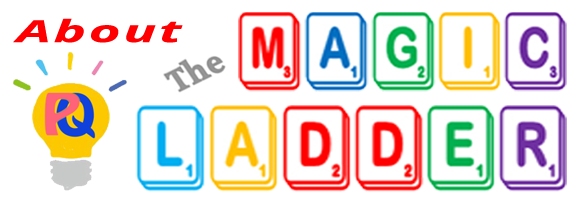 found on most of the Magic Ladder’s pages.
found on most of the Magic Ladder’s pages.

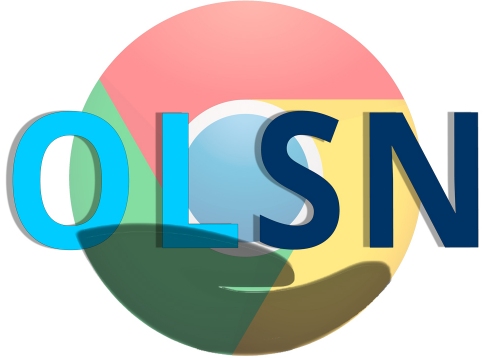 Using OLSN With Other Websites
Using OLSN With Other Websites
 OLSN is a kind of safety net. Stop and Read and PQ Games are like training wheels. Together they create a “Magic Ladder” that makes climbing the wall of literacy easier for children. But OLSN is not limited to the Magic Ladder. OLSN can be added to Chrome web browsers (for free) and once added will add OLSN‘s word learning support to virtually every word on the internet. If your child uses a Windows or Mac desktop or laptop, or a Chromebook, and if they have Google’s Chrome Browser installed, please install the OLSN Chrome Extension. Once you install OLSN into their Chrome browsers, they can use OLSN on most popular web sites including these educational sites:
OLSN is a kind of safety net. Stop and Read and PQ Games are like training wheels. Together they create a “Magic Ladder” that makes climbing the wall of literacy easier for children. But OLSN is not limited to the Magic Ladder. OLSN can be added to Chrome web browsers (for free) and once added will add OLSN‘s word learning support to virtually every word on the internet. If your child uses a Windows or Mac desktop or laptop, or a Chromebook, and if they have Google’s Chrome Browser installed, please install the OLSN Chrome Extension. Once you install OLSN into their Chrome browsers, they can use OLSN on most popular web sites including these educational sites:
 |
 |
 |
 |
 |
 |
 |
…and millions of others.
To learn more about or to install the Chrome browser extension, click the following button:
For more information and more tools that might help your child visit:





















